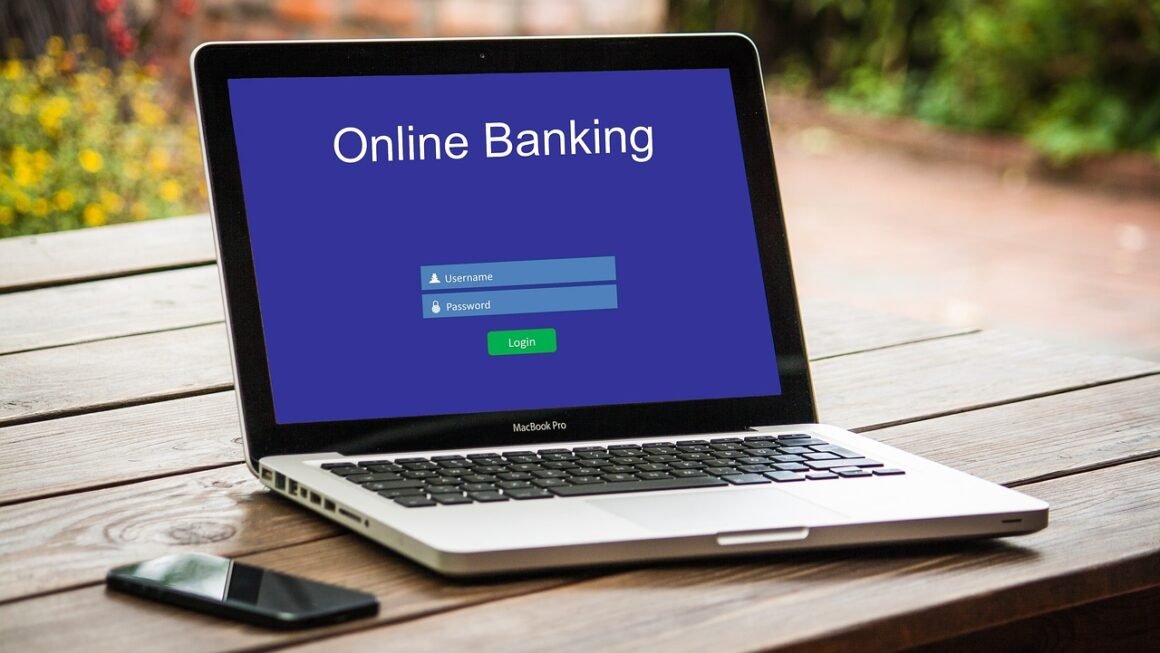Data privacy has rapidly evolved from a niche concern to a mainstream imperative, impacting everything from individual online experiences to global business strategies. In today’s digital landscape, where personal information is constantly collected, shared, and analyzed, understanding and protecting your data is more crucial than ever. This guide delves into the core principles of data privacy, explores key regulations, and provides practical steps you can take to safeguard your information.
Understanding Data Privacy: What It Means and Why It Matters
Defining Data Privacy
Data privacy, also known as information privacy, refers to the right of individuals to control how their personal information is collected, used, shared, and stored. It encompasses various aspects, including:
- The ability to access and review your own data held by organizations.
- The right to correct inaccuracies in your personal information.
- The ability to restrict or object to the processing of your data for certain purposes.
- The right to have your data erased under specific circumstances (“right to be forgotten”).
- Transparency regarding how organizations collect, use, and share your data.
Why Data Privacy Matters
The importance of data privacy stems from the potential risks associated with the misuse of personal information. These risks include:
- Identity Theft: Stolen personal data can be used to open fraudulent accounts, apply for loans, and commit other financial crimes.
- Financial Loss: Data breaches can expose credit card numbers and other financial information, leading to direct financial losses.
- Reputational Damage: Sensitive personal information, such as private photos or messages, can be leaked and used to damage your reputation.
- Discrimination: Data can be used to discriminate against individuals based on factors such as race, gender, or religion.
- Surveillance and Manipulation: Data can be used to track your online activities and manipulate your behavior through targeted advertising and personalized content.
The Growing Importance of Data Privacy
Several factors have contributed to the increasing importance of data privacy:
- Technological Advancements: The rapid growth of the internet, social media, and mobile devices has led to an explosion in data collection.
- Data Breaches: The frequency and scale of data breaches are increasing, exposing vast amounts of personal information to malicious actors. In 2023 alone, data breaches exposed billions of records.
- Regulatory Scrutiny: Governments around the world are enacting stricter data privacy laws to protect citizens’ rights.
- Increased Awareness: Consumers are becoming more aware of the risks associated with data collection and are demanding greater control over their personal information.
Key Data Privacy Regulations Around the World
General Data Protection Regulation (GDPR)
The GDPR is a landmark data privacy law that applies to organizations operating within the European Union (EU) and the European Economic Area (EEA), as well as those processing the data of EU/EEA residents, regardless of their location. Key provisions include:
- Data Minimization: Organizations must only collect data that is necessary for the specified purpose.
- Purpose Limitation: Data can only be used for the purpose for which it was collected.
- Consent: Organizations must obtain explicit consent from individuals before collecting and processing their data.
- Data Security: Organizations must implement appropriate technical and organizational measures to protect data from unauthorized access, use, or disclosure.
- Right to Access, Rectification, and Erasure: Individuals have the right to access, correct, and delete their personal data.
- Example: A website that collects email addresses for marketing purposes must obtain explicit consent from users and provide them with a clear explanation of how their data will be used.
California Consumer Privacy Act (CCPA) and California Privacy Rights Act (CPRA)
The CCPA grants California residents significant rights over their personal information, including the right to:
- Know what personal information is being collected about them.
- Delete personal information that has been collected from them.
- Opt-out of the sale of their personal information.
- Non-discrimination for exercising their CCPA rights.
The CPRA, an amendment to the CCPA, further strengthens these rights and establishes the California Privacy Protection Agency (CPPA) to enforce the law.
- Example: A retail company operating in California must provide a clear and conspicuous “Do Not Sell My Personal Information” link on its website.
Other Important Regulations
- Personal Information Protection and Electronic Documents Act (PIPEDA) – Canada: Governs the collection, use, and disclosure of personal information in the private sector.
- Privacy Act – Australia: Regulates the handling of personal information by Australian government agencies and some private sector organizations.
- Lei Geral de Proteção de Dados (LGPD) – Brazil: Brazil’s data protection law, similar to GDPR, focusing on consent, transparency, and data security.
Practical Steps for Protecting Your Data Privacy
Control Your Online Activity
- Use Strong and Unique Passwords: Create strong, unique passwords for each of your online accounts and store them securely using a password manager.
- Enable Two-Factor Authentication (2FA): 2FA adds an extra layer of security to your accounts by requiring a second verification method, such as a code sent to your phone.
- Review Privacy Settings: Regularly review and adjust the privacy settings on your social media accounts and other online services to limit the amount of information you share publicly.
- Use a Virtual Private Network (VPN): A VPN encrypts your internet traffic and masks your IP address, protecting your online activity from being tracked.
- Be Cautious of Phishing Scams: Be wary of suspicious emails, messages, and websites that ask for your personal information. Never click on links from unknown sources.
Manage Your Data with Companies
- Read Privacy Policies: Before using a website or service, read the privacy policy to understand how your data will be collected, used, and shared.
- Exercise Your Rights: Take advantage of your rights under data privacy laws, such as the right to access, correct, and delete your personal data. Contact companies directly to exercise these rights.
- Limit Data Sharing: Be selective about the information you share with companies and only provide data that is necessary for the service you are using.
- Opt-Out of Tracking: Opt-out of tracking by disabling cookies and using privacy-focused browsers and search engines. Many websites offer options to limit ad tracking as well.
- Use Privacy-Focused Tools: Consider using privacy-focused browsers like Brave or DuckDuckGo, which block trackers and protect your privacy.
Protect Your Devices and Networks
- Keep Your Software Up-to-Date: Regularly update your operating system, browser, and other software to patch security vulnerabilities.
- Use Antivirus Software: Install and maintain antivirus software to protect your devices from malware and other threats.
- Secure Your Wi-Fi Network: Use a strong password for your Wi-Fi network and enable encryption (WPA3 is recommended).
- Be Careful with Public Wi-Fi: Avoid using public Wi-Fi networks for sensitive transactions, as they are often unsecured. If you must use public Wi-Fi, use a VPN.
- Physically Secure Your Devices: Protect your devices from theft and unauthorized access by using strong passwords and keeping them in a secure location.
The Role of Businesses in Protecting Data Privacy
Implementing Privacy-Enhancing Technologies
Businesses can implement privacy-enhancing technologies (PETs) to protect data privacy while still achieving their business goals. Examples include:
- Data Anonymization: Removing identifying information from data to protect the privacy of individuals.
- Data Encryption: Encrypting data to prevent unauthorized access.
- Differential Privacy: Adding noise to data to protect the privacy of individuals while still allowing for statistical analysis.
- Secure Multi-Party Computation (SMPC): Allowing multiple parties to jointly compute on data without revealing their individual data.
Building a Culture of Privacy
- Training Employees: Provide regular training to employees on data privacy best practices and compliance with relevant regulations.
- Establishing a Privacy Governance Framework: Develop a comprehensive privacy governance framework that includes policies, procedures, and controls to protect data privacy.
- Conducting Privacy Impact Assessments (PIAs): Conduct PIAs to identify and mitigate potential privacy risks associated with new projects or initiatives.
- Appointing a Data Protection Officer (DPO): Appoint a DPO to oversee data privacy compliance and serve as a point of contact for data privacy inquiries.
- Maintaining Transparency: Be transparent with customers about how their data is collected, used, and shared.
Ensuring Compliance with Regulations
- Staying Up-to-Date: Stay up-to-date on the latest data privacy regulations and ensure that your organization is compliant.
- Conducting Regular Audits: Conduct regular audits to assess your organization’s compliance with data privacy regulations.
- Developing a Data Breach Response Plan: Develop a comprehensive data breach response plan to address data breaches quickly and effectively.
Conclusion
Data privacy is not just a legal requirement; it is a fundamental right. By understanding the principles of data privacy, staying informed about relevant regulations, and taking proactive steps to protect your personal information, you can safeguard your privacy and mitigate the risks associated with data breaches and misuse. Businesses, too, have a critical role to play in protecting data privacy by implementing privacy-enhancing technologies, building a culture of privacy, and ensuring compliance with regulations. In an increasingly data-driven world, prioritizing data privacy is essential for building trust, fostering innovation, and protecting the rights of individuals.



